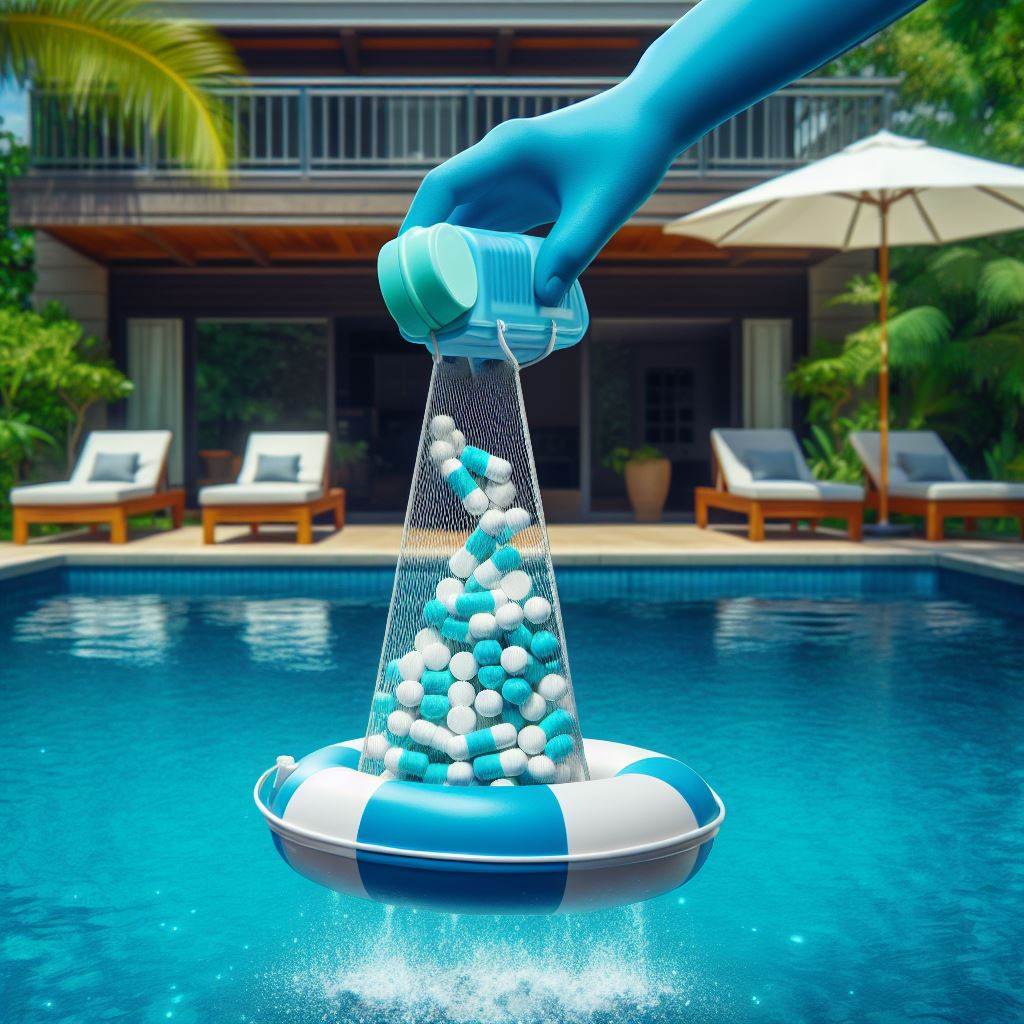In the vast expanse of aquatic ecosystems, maintaining water clarity, hygiene, and ecological balance stands as a paramount challenge. The introduction of chlorine floaters into the realm of water management has revolutionized the way we approach these tasks, offering a cost-effective and efficient solution for various water bodies, from swimming pools to vast lakes and reservoirs. This article delves into the multifaceted application of chlorine floaters, highlighting their unique benefits, practical implementations, and the impact they’ve had on enhancing water quality.

I. Introduction to Chlorine Floaters: Dynamic Guardians of Water Purity
Chlorine floaters, also known as automatic chlorinators, are innovative devices designed to continuously dispense controlled amounts of chlorine into water bodies. These floating dispensers harness the power of chlorine, a potent disinfectant, to combat harmful bacteria, algae, and other microorganisms that can compromise water quality. By automating the chlorination process, they eliminate the need for manual dosing, ensuring consistent and reliable water treatment.
II. Streamlining Maintenance Operations: A Boon for Facility Managers
1. Efficiency Boost:
Chlorine floaters significantly reduce the workload for pool and lake managers by automating the time-consuming task of adding chlorine. This not only saves time but also ensures that the water remains sanitized around the clock.
2. Cost Savings:
Long-term, these systems lead to cost savings as they minimize the need for excessive manual labor and frequent chemical purchases due to overcompensation for irregular dosing.
3. Easy Maintenance:
Modern chlorine floaters are designed for user-friendliness, featuring adjustable settings for chlorine output and intuitive monitoring systems that alert operators to any issues.

III. Preserving Water Clarity and Hygiene: The Science Behind Chlorination
1. Bacterial Control:
Chlorine’s primary function is to kill or inhibit the growth of harmful bacteria, viruses, and fungi that can cause waterborne illnesses. Regular chlorination maintains a safe environment for swimmers and other water users.
2. Algae Prevention:
Excessive algae growth can lead to water discoloration, odor issues, and even a decrease in dissolved oxygen levels. Chlorine floaters help prevent algae blooms by maintaining a balanced chlorine level that discourages algal proliferation.
3. Water Clarity Enhancement:
By controlling contaminants, chlorine floaters contribute to clearer, more inviting water, enhancing the overall aesthetic appeal and usability of water bodies.
IV. Environmental Stewardship: Balancing Sanitation with Sustainability
1. Eco-Friendly Operation:
Although concerns have been raised about the environmental impact of chlorine, modern chlorine floaters use precise dosing mechanisms to minimize chemical waste. This ensures that only the necessary amount of chlorine is released, reducing the risk of harmful byproducts and promoting eco-conscious water management.
2. Safe for Wildlife:
Properly managed chlorination programs minimize the risk of adverse effects on aquatic ecosystems. By maintaining a delicate balance, water bodies can support diverse wildlife populations while ensuring human health and safety.
V. Case Studies: Success Stories Across Diverse Applications
1. Public Pools:
Chlorine floaters have become a staple in public swimming pools, ensuring that thousands of visitors enjoy safe and hygienic swimming experiences every day.
2. Residential Ponds and Lakes:
Private property owners have also embraced these systems to maintain the beauty and health of their ponds and lakes, enhancing property values and promoting a sense of tranquility.
3. Water Parks and Spas:
The high-traffic nature of these facilities necessitates constant water quality monitoring and maintenance. Chlorine floaters provide a reliable solution, ensuring that guests enjoy their experiences worry-free.
Conclusion
As the demand for clean and safe water continues to grow, the role of chlorine floaters in water management becomes increasingly crucial. Their ability to streamline maintenance, enhance water clarity and hygiene, and contribute to environmental stewardship makes them an invaluable tool for a wide range of applications. As technology advances, we can expect even more sophisticated and efficient chlorine floaters to emerge, further refining our approach to water management and preserving the precious resource for generations to come.
 Instant
Quote
Instant
Quote Email
Us
Email
Us